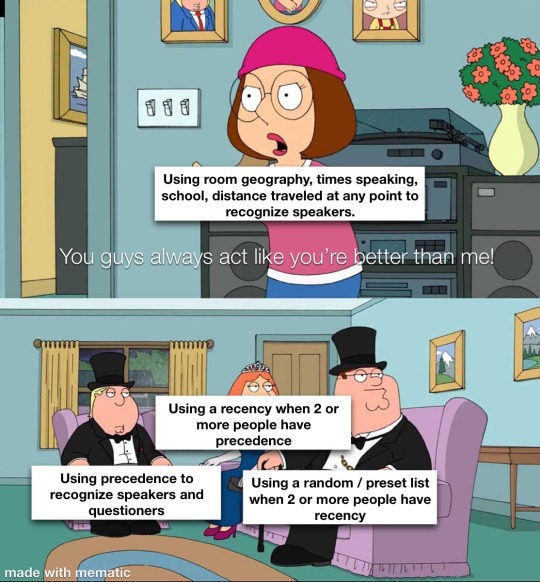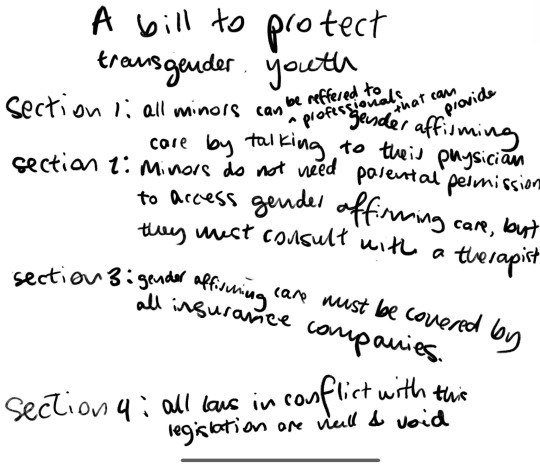#NSDA
Text
i feel like this is incredibly niche and really only appealing to me BUT,,,,, zukka speech & debate au
#and i’m talking like official NSDA zukka#thot of this the other day and it will not leave my head#i love my zukka brain worms#zukka#zuko#sokka#atla#avatar the last airbender#nsda#speech and debate#zukka au#atla zukka#atla zuko#atla sokka
237 notes
·
View notes
Text
there's no feeling quite like waiting for your breaks to finally come out because everyone else is already leaving and then they do come out and you watch your mortal enemy stand up from across the cafeteria
60 notes
·
View notes
Text
defend your answer in tags!
28 notes
·
View notes
Text
so tumblr is where to find the policy kids. got it
6 notes
·
View notes
Text

I made this a few years ago and posted it on Reddit. It maybe got five likes. I haven’t posted on here often this past decade but maybe some of the old heads will enjoy this
6 notes
·
View notes
Text
Credits to the creator on Tik tok
37 notes
·
View notes
Text
sometimes i just remember that josh gad is a NSDA champion
7 notes
·
View notes
Text
BOTH OF THE PUFO TOPIC OPTIONS ARE SO COOL IM SO EXCITED FOR JANUARYYYYYY!!!! (LD on the other hand is eeghhhhgg I’m up for one or two but the third option is a little too similar to one of last year’s pufo topics)
9 notes
·
View notes
Text
Captain's Corner: Tips For Unpacking A New Topic
As the end of the month is in sight, a new resolution is right around the corner. Being presented with a new topic is often daunting. Here are a few tips to get started!
Break down the resolution.
Pick out key topical words: Who might the actors be? Who might be affected?
Pick out phrasing nuances: “On balance” may indicate cost benefit analysis. “Should” may indicate an action-promoting affirmative. Consider how “substantial” may be interpreted.
Are there any words or concepts you are not familiar with? Define them.
Identify the status quo.
What is happening right now? What might be good or bad about it? How might affirming change it?
Need some inspiration?
Ask your coaches! Your coaches at Potomac Oak are always happy to help you learn more about strategies, the different nuances of debate, and the topics at hand.
Check briefs! Organizations such as Champion Debate, DebateUS, and Victory Briefs all offer analysis and cards on the topic! While many of these briefs cost money, you can often find free versions on Discord or Reddit.
Youtube! Watching videos on Youtube is a great way to gain background information in an engaging way. Various debate organizations provide recorded topic lectures for your viewing.
Let the research lead you!
Instead of hunting down arguments that you’ve heard from within the debate community, allow yourself to explore various postures through online literature.
What are the most common perspectives? What argument is each perspective proposing? Consider the strength of each argument and how they might weigh against one another when choosing your contentions.
We hope that these tips help kickstart your journey on this new topic! We wish everyone the best of luck in their upcoming tournaments!
P.S. The new Nocember topic is Resolved: The United States federal government should forgive all federal student loan debt.
9 notes
·
View notes
Text

This message is for all the POs
20 notes
·
View notes
Text
III: Grab the Scissors!—CUTTING (WITH A GENERAL FORMAT OF A POI)
Cutting is one of the most important parts of a POI.
“But why?”
Because cutting (or extracting excerpts from a text source) determines the entire performance. Cutting is the process of choosing what words an audience hears: if one’s cutting is weak or unclear, then the entire performance becomes weaker.
Here is the thing…I am not you: what a shocker. Why do I bring this up? Well, each person has their own artistic vision for their program, and I would like to not inhibit that. However, in this section, I (as a person imparting advice) shall provide some basic principles to follow.
SECTION 1: FUNCTIONAL CUTTING
One of the most important tips that I can give is: Condense your message. Ten minutes may seem like a lot (and it is), but using one’s time wisely is the key to an amazing POI.
As the title of this section says, functional cutting (a term I created) is the process of analyzing a program’s excerpts as functional units (For any music fans, I coined the term “functional cutting” as a parallel to “functional harmony”, where different chords of a given scale share a “function”). Functional cutting isn’t a quantifiable concept, nor is it a formal practice. However, it is useful to analyze each piece in a program for its function. For instance, here is my analysis of the first three minutes of Ella Schnake’s 2019 POI (“Debate Like a Girl”, found here).
1—Drum Dream Girl: a beginning to the entire POI, meant to intrigue the audience, featuring percussive words and a playful nature.
2—Presidential Debate: a humorous transition towards the theme of sexism in debate, meant to introduce the audience towards the core issue of the program, featuring a funny (yet poignant) piece that encapsulates the entire problem at hand.
3—Being a Female Debater: a personal anecdote that continues the struggle, meant to entice the audience and highlight the vexation that female debaters face, featuring a dash a humor via the narrator’s relatability (and hinting at the darker tone through the final line about double standards).
4—Debate Manual: an informative presentation, meant to educate the audience about the severity of the issue, featuring a simple (yet effective) statistic and a concerned tone.
5—Drum Dream Girl [repeated]: a piece that leads to the “formal” introduction of the POI, meant to contrast the girl’s felicity with the reality of societal expectations, featuring the same percussion as before, but with a stinted resolution (“but everyone … believed that only boys should play drums.”)
After these five excerpts, the introduction occurs. An average POI begins with 3 to 5 cuts, beginning after a minute or 2 (although this isn’t necessary). I will feature a separate post about the introduction and how to write it. However, the basic purpose of an introduction is clarifying the message of the program. After the “message” portion of the POI, there is introducing the sources. This is mandatory. I REPEAT. THIS IS MANDATORY. The title is also said. THIS IS ALSO MANDATORY.
I will elaborate more on the introduction, but the rest of the POI starts, featuring a moderate increase in intensity and a climax. After the climax, there is a conclusive piece that closes the POI.
When cutting one’s pieces, PLEASE take note of the general formatting of a piece. The usage of unnecessary pieces that could be illustrated more efficiently detracts from the message. For instance, if you have multiple cuts that are repetitive, then they start to become non-unique. I’ve felt this firsthand with programs in the past. One may think that this reinforces a message, but it only muddles the efficiency of a performance.
SECTION 2: THE GENERAL PROCESS
***NOTE: I am not a coach, nor am I an official voice on behalf of the NSDA. I am simply providing my process, and if I happen to provide any wrong information, then please inform me in the comments.
Well, how do I cut a piece? Well, the first step is to open a blank document on Google Docs (trust me, it is efficient and useful for sharing). Either in separate docs or in separate sections of the same document, paste the entire original text onto the doc. If it happens to be a book, then provide the necessary identifiers (page numbers, etc.) to locate it. One can rely on the NSDA High School Unified Manual for more help with this portion of cutting, but it should be fairly painless. This may just be something that I do, but I like to provide a Works Cited page (in MLA format) simply because it evades any accusations of fraudulence. Whatever one chooses to do, please stay consistent with one’s formatting.
SECTION 3: THE AUDIENCE
When cutting pieces, PLEASE be aware of your audience. Speech is all about communicating a message; if a piece is unclear (either in its context, meaning, or otherwise), then one’s judges cannot vote for one’s program, regardless of how amazing the performance is.
If a piece has excessive big words, excessive (non-essential) profanity, or excessive passages of difficult-to-pronounce words, then try to cut them out (or find an alternative source altogether).
For instance, in my AIDS POI, I included an excerpt (right after the introduction) that said "I've been given the option of being an inpatient at the hospital, or coming in twice a day to be hooked to a drip." Even from reading this section in one's head, one can hear the sounds that make it hard to say: the n's and the vowels that merge together when said quickly together. Instead of helping to portray the intended message (that people who contracted AIDS struggled with access to medical care), this excerpt hurt the message by detracting the audience's attention towards my crummy and unclear British accent.
If a piece has any necessary context, either include the context or don’t include the piece. As stated above, if a performance is lacking context, then no matter how amazing the emotion is, there isn’t enough context to sense that emotion.
With these three principles in mind, please note that I am not an ultimate voice in Program of Oral Interpretation, and cutting is very subjective; no one else really is an ultimate voice either. However, please also listen to any concerns from one’s peers or coaches. They may bring enlightening insight to one’s program if one simply listens. :)
6 notes
·
View notes
Text

Guys review my bill pls
#congressional debate#nsda#speech and debate#transgender#trans rights#trans youth#ares.txt#lgbtq#lgbt
8 notes
·
View notes
Text
i think that policy debaters being allowed to and totally accepted for pulling up to a tournament in a tshirt and sweatpants is really a reflection of what the event is like
25 notes
·
View notes
Text
speech and debate kids are another breed. when i did congressional debate, there was a kid who showed up in full joker makeup and fit to match. it was halloween, so i had just been like “yeah whatever man thats cool”
but then the next day, same kid shows up, green hair and facepaint re done and even more extreme. and proceeded to give every speech with a joker impression, open with a reference to ANY batman movie featuring the joker, and still won first.
42 notes
·
View notes
Text
bro my state competition was so unorganized. got state champ in poi but they didn’t have the right medal so ig im now a state qualifier in dd 😍
also at my first tournament, my first place trophy was a coffee mug from the head coach’s garage 🥰🥰
2 notes
·
View notes
Text
I’m procrastinating on writing my speech by reading a book…in which the author is describing his experience with high school speech and debate. If that’s not irony, I don’t know what is.
13 notes
·
View notes